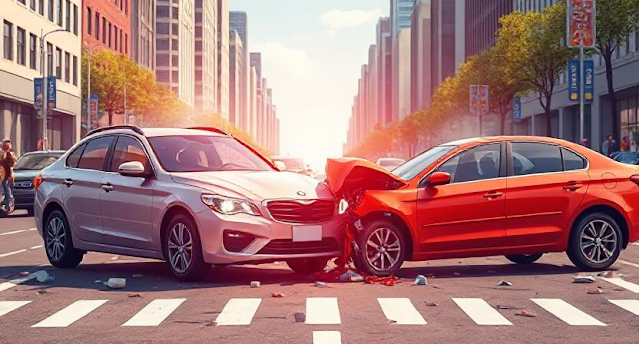Head-on car accidents are among the most severe types of vehicle collisions, often leading to catastrophic injuries, fatalities, and extensive property damage. These accidents typically occur due to reckless driving, distracted driving, intoxication, or poor road conditions. The legal and financial implications can be overwhelming, making it crucial to understand your rights, liability laws, and the process of filing a compensation claim.
In this comprehensive guide, we will explore the legal consequences of head-on collisions, how fault is determined, and how a car accident lawyer can help you secure fair compensation.
Understanding Head-On Car Accidents
A head-on collision occurs when two vehicles traveling in opposite directions crash front-to-front. These accidents often result in severe injuries due to the high impact force, including:
- Traumatic brain injuries (TBI)
- Spinal cord injuries and paralysis
- Broken bones and fractures
- Internal organ damage
- Whiplash and soft tissue injuries
Because of the high fatality rate, legal consequences and compensation claims in head-on collisions can be more complex than other types of accidents.
Legal Consequences of Head-On Collisions
1. Liability in Head-On Accidents
Determining liability in a head-on accident is crucial for filing a compensation claim. The at-fault driver is typically responsible for paying damages. Common causes of liability include:
- Distracted Driving – Using a phone, eating, or adjusting GPS while driving.
- Driving Under the Influence (DUI) – Alcohol and drug impairment significantly increase accident risks.
- Reckless or Speeding Drivers – Ignoring traffic signals, overtaking dangerously, or driving over the speed limit.
- Wrong-Way Driving – Entering a road in the wrong direction due to poor signage, intoxication, or inexperience.
2. Criminal Penalties for At-Fault Drivers
If a driver is found guilty of gross negligence or criminal activity, they may face serious legal consequences, including:
- Fines and license suspension for reckless driving.
- DUI charges, which can lead to jail time and revocation of driving privileges.
- Vehicular manslaughter charges if the accident results in a fatality.
Even if the at-fault driver is not criminally charged, they can still be held civilly liable for damages.
How Fault is Determined in a Head-On Collision
In personal injury claims, insurance companies and courts use evidence to determine fault in a head-on accident. Key factors include:
1. Police Reports
A police accident report provides crucial evidence about the scene, road conditions, and possible law violations.
2. Eyewitness Testimony
Witnesses can provide unbiased accounts of how the accident happened, which can strengthen a claim.
3. Accident Reconstruction Experts
Experts analyze the impact angle, skid marks, and damage patterns to determine how the crash occurred.
4. Surveillance & Dashcam Footage
Video footage can provide undeniable proof of who crossed into the other lane or engaged in reckless driving.
5. Vehicle Damage & Injuries
The location of vehicle damage and injury patterns can indicate which driver was at fault.
Filing a Compensation Claim for a Head-On Collision
1. Types of Compensation Available
Victims of head-on collisions may be entitled to various forms of compensation, including:
- Medical Expenses – Hospital bills, surgeries, rehabilitation, and ongoing treatments.
- Lost Wages – Compensation for time off work due to injuries.
- Pain and Suffering – Damages for physical pain, emotional trauma, and reduced quality of life.
- Property Damage – Repair or replacement costs for the damaged vehicle.
- Wrongful Death Damages – If the accident results in a fatality, the victim’s family may seek compensation for funeral costs and loss of financial support.
2. Filing an Insurance Claim
Victims must file a claim with the at-fault driver’s insurance company. Texas follows an at-fault insurance system, meaning the driver responsible for the crash is liable for damages.
Steps to file a claim:
- Notify your insurance provider immediately.
- Gather evidence, including photos, medical records, and police reports.
- Consult a car accident lawyer before accepting any settlement offer.
3. Dealing with Insurance Companies
Insurance adjusters may attempt to minimize payouts by disputing fault or undervaluing injuries. Do not accept an initial settlement without consulting a lawyer, as it may not fully cover long-term medical expenses or lost income.
Why You Need a Car Accident Lawyer
1. Maximizing Compensation
A personal injury lawyer ensures you receive the full amount you are entitled to, including long-term medical costs and future wage losses.
2. Proving Liability
Attorneys work with accident reconstruction experts, medical professionals, and witnesses to build a strong case.
3. Handling Insurance Negotiations
Insurers often use tactics to delay or deny claims. A lawyer protects your rights and ensures fair negotiations.
4. Filing a Lawsuit if Necessary
If the insurance company refuses a fair settlement, an attorney can file a lawsuit and represent you in court.
Statute of Limitations for Head-On Collision Claims
Texas has a two-year statute of limitations for filing a personal injury lawsuit after a car accident. If a claim is not filed within two years from the accident date, the victim may lose the right to seek compensation.
Final Thoughts
Head-on collisions can be life-altering, with severe legal and financial consequences. If you or a loved one has been injured in a head-on accident, understanding liability laws, insurance policies, and legal options is crucial for securing fair compensation.
Consulting an experienced car accident attorney can help navigate the complexities of insurance claims, legal liability, and court proceedings, ensuring you receive the justice and compensation you deserve.


